Ag A-Z
Author
Published
10/1/2025
How ag has shaped Minnesota
From the historic flour mills that powered its early economy to the modern advancements in technology used today, agriculture has been at the heart of Minnesota's identity before it even became a state in 1858. Generations of farmers, ranchers and pioneers all played a central role in shaping the state’s culture and driving its economy. As agriculture evolves, sustainable practices and cutting-edge technologies are ensuring that it remains a vital part of Minnesota’s future.
A: Apple Breeding
Dedicated to cold-hardy variety research and consumer-driven priorities, the University of Minnesota’s apple breeding program is regarded as one of the best in the country, thanks to its h orticulture genetic advancement. At any given time, there are between 20,000-25,000 trees in various stages of development and evaluation. Since its founding in 1878, the program has introduced just 29 apple varieties (the latest being Kudos, a cross between Honeycrisp and Zestar!).
orticulture genetic advancement. At any given time, there are between 20,000-25,000 trees in various stages of development and evaluation. Since its founding in 1878, the program has introduced just 29 apple varieties (the latest being Kudos, a cross between Honeycrisp and Zestar!).
Its most famous, Honeycrisp, took 31 years to create (from breeding to market introduction) and is currently one of the topmost produced apple varieties in the U.S. Named the state fruit in 2006, Honeycrisp helped revitalize Minnesota’s apple growing industry—which generated substantial royalties for the U of M as one of the university’s top innovations and brought revenue to family-run orchards.
Read more in the Fall 2023 issue.
B: Biofuel
The first state to require the use of biodiesel was Minnesota. With three biodiesel plants and a combined production capacity of approximately 85.5 million gallons per year, Minnesota ranks eighth among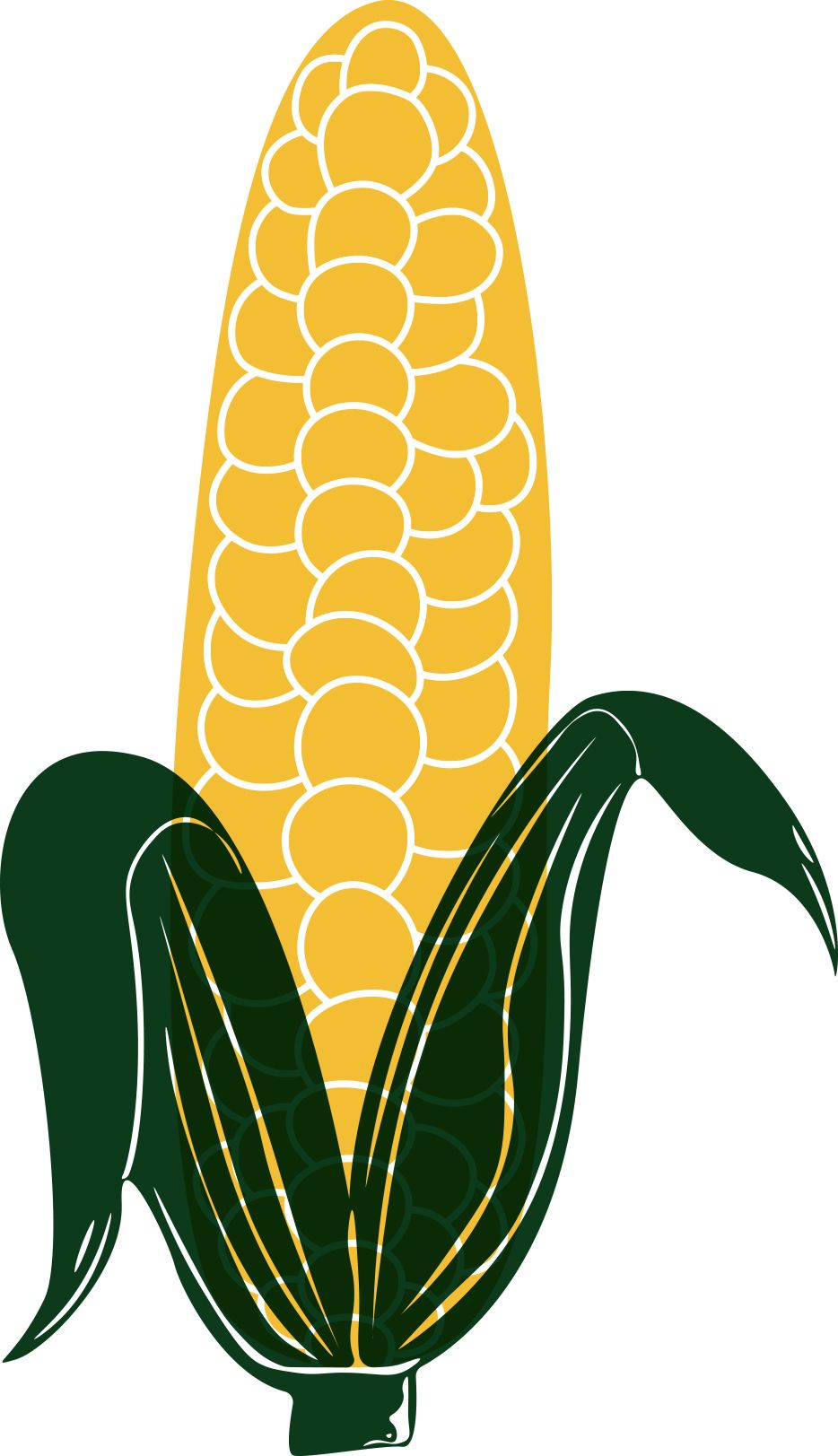 U.S. states in biodiesel production.
U.S. states in biodiesel production.
The renewable, cleaner-burning diesel replacement can be made from soybean oil. The biodiesel industry has a $1.7 billion economic impact on Minnesota GDP, including $676 million in farm-level impact. For soybean producers, biodiesel is estimated to add more than $1 to every bushel of soybeans and increase demand by 13%.
Additionally, Minnesota was the first state to mandate the use of ethanol in its fuel supply and today state law requires that all gasoline sold in Minnesota contain 10% ethanol (E10). Field corn is the main ingredient in ethanol, and each bushel of corn produces 2.9 gallons of ethanol. The state has 18 ethanol plants, with a combined production capacity of more than 1 billion gallons, and many of Minnesota’s plants began in the 1990s as farmer-owned cooperatives.
C: County Fairs
County Fairs are a cherished part of Minnesota’s cultural and social landscape, uniting communities across the state in celebration of agriculture, tradition and shared experiences. Steeped in history, these fairs proudly showcase Minnesota’s agricultural roots with 4-H competitions, livestock exhibitions and displays of local produce. 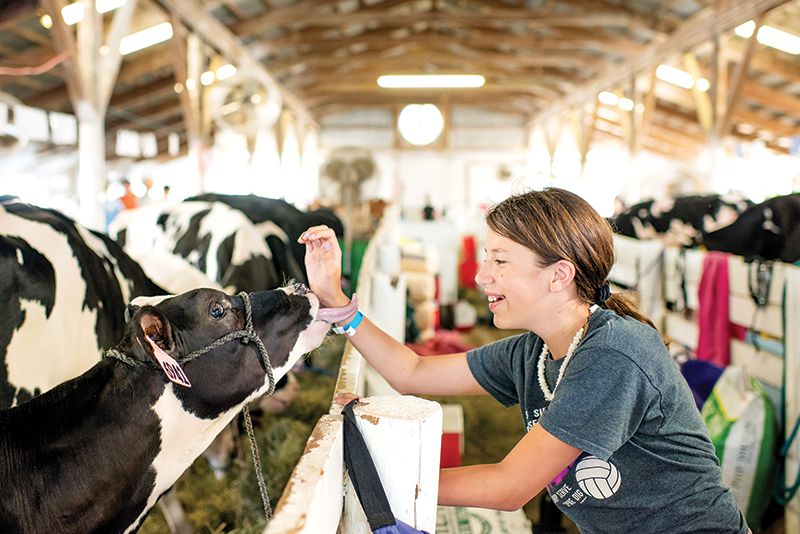
The impact of county fairs extends beyond the festivities, generating substantial economic benefits. Counties like Beltrami and Pine report over $1 million in spending during fairs, with visitors contributing an average of $28 daily to local economies, and every dollar has a return of $4.43 in spending.
The Minnesota Department of Agriculture offers County Fair Grants that help Minnesota county fairs preserve and promote agriculture. Funds come from the Minnesota Legislature through the Agricultural Growth, Research, and Innovation Program (AGRI) and the Legacy Amendment.
D: Dairy Farming
Minnesota is home to a diverse range of dairy farms, raising animals like cows, goats and sheep to produce safe, high-quality milk. These licensed farms supply their milk to processing facilities within Minnesota and in neighboring states. 
In 1921, 320 Minnesota dairy farmers united to form the Minnesota Cooperative Creameries Association, today known as Land O’ Lakes. The century-old cooperative is now one of the largest co-ops in America, operating in all 50 states and more than 60 countries. Owned by both farmers and ag retailers, many of these businesses are family-owned and generations old.
By empowering local farmers and offering fair opportunities for growth, the cooperative helps foster economic stability in rural communities. Its headquarters in Arden Hills is a hub for agricultural innovation, driving advancements in farming methods, sustainability and food production.
Read more in the Summer 2023 issue.
E: Eggs
Ranking No. 12 in poultry production in the U.S., Minnesota accounts for 3% of all poultry and egg production in the U.S. Egg production and processing directly contributes more than half a billion dollars to the state’s economy. In 2024, Minnesota laying hens produced over 2 billion eggs. 
Over the last three years, a large focus and concern for both poultry farmers and consumers has been the avian influenza, which has wiped out flocks and driven up the price of eggs. Farmers have since employed safety measures to prevent exposure, and many have taken to implementing laser-based technology to keep wild birds away from their flocks (the same technology used at airports to prevent bird strikes when airplanes take off and land). While effective, the technology comes at a high cost. The Minnesota House of Representatives has approved funding for biosecurity measures, including laser deterrents, while the Minnesota Department of Agriculture’s Protect Grant has $500,000 available to give Minnesota farmers and ranchers. Applicants can receive up to $10,000 to cover up to 80% of equipment costs to enhance biosecurity and prevent the spread of avian influenza
F: Farmamerica
Minnesota’s evolving story of agriculture takes shape in innovative and interactive exhibits at Farmamerica: Minnesota Agricultural Interpretive Center in Waseca. The 360-acre site features a 1-mile 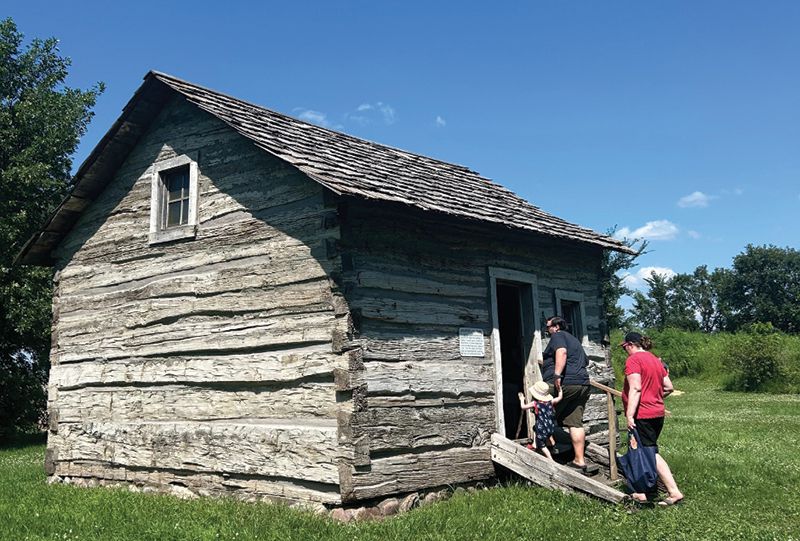 paved walking path that passes through two centuries of history and over 20 historic structures, including a homestead, schoolhouse, church and blacksmith. The restored native prairie lands show what Minnesota looked like before European settlement in the 1850s, and guests can interact with live farm animals and see field cropping firsthand.
paved walking path that passes through two centuries of history and over 20 historic structures, including a homestead, schoolhouse, church and blacksmith. The restored native prairie lands show what Minnesota looked like before European settlement in the 1850s, and guests can interact with live farm animals and see field cropping firsthand.
G: General Mills
Established in 1928, General Mills emerged from the state's flour milling boom. The company was formed through the consolidation of several flour mills along the Mississippi River, benefiting from the region's proximity to wheat fields and hydropower. Over the decades, General Mills expanded beyond flour production into food innovation, creating iconic brands like Bisquick, Cheerios and Betty Crocker.
region's proximity to wheat fields and hydropower. Over the decades, General Mills expanded beyond flour production into food innovation, creating iconic brands like Bisquick, Cheerios and Betty Crocker.
H: Hormel Foods
Founded in 1891 as a small meatpacking company, Hormel Foods has since grown into a global food brand. Known for products like SPAM, Hormel has been a pioneer in food innovation, introducing  canned ham and chili early in its history. During WWII, Hormel shipped about 15 million cans of meat per week overseas, and by 1944, more than 90% of its canned foods were shipped for government use.?
canned ham and chili early in its history. During WWII, Hormel shipped about 15 million cans of meat per week overseas, and by 1944, more than 90% of its canned foods were shipped for government use.?
The Hormel Institute, established in 1942 in partnership with the University of Minnesota, initially focused on food preservation and safety with the goal of larger scientific discoveries. The institute expanded into cancer and chronic disease research in the early 2000s.
I: Industrial Hemp
Once a thriving commodity crop, growing industrial hemp was prohibited with the 1937 Marihuana Tax Act and banned with the 1970 Controlled Substances Act. Hemp reemerged in 2014 with the Farm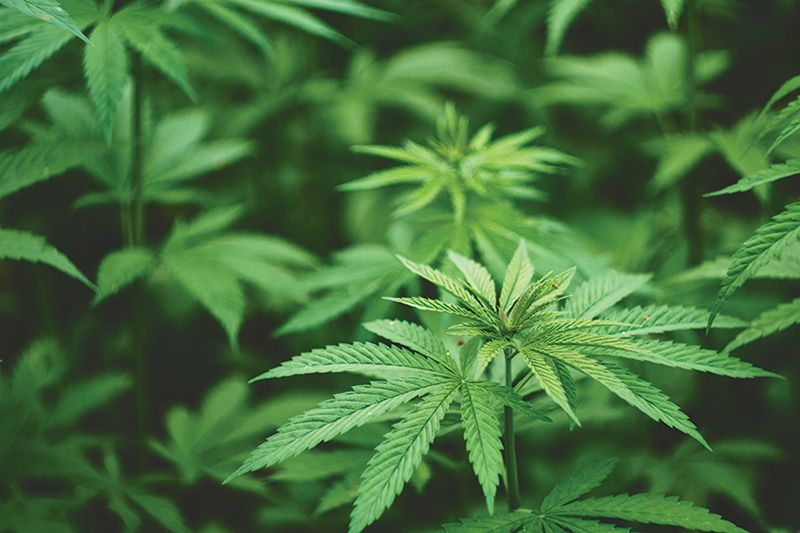 Bill, which allowed state departments of agriculture to administer pilot programs, and was officially legalized and removed from the Controlled Substances Act in 2018.
Bill, which allowed state departments of agriculture to administer pilot programs, and was officially legalized and removed from the Controlled Substances Act in 2018.
Today, industrial hemp is used for insulation in homes, cement alternatives, biofuels, plant-based proteins, cosmetics and bioplastics.
J: Jobs
Minnesota ranks No. 6 in agricultural production and generates $26 billion in annual sales. Together, agriculture, food processing and forestry industries make up more than 15% of Minnesota’s economic activity and provide over 10% of its jobs. These industries collectively contribute nearly $106 billion each year to the state’s economy and sustain 388,134 jobs.
Most agricultural jobs don’t require a formal education, but rather on-the-job training. The Minnesota Dual-Training Pipeline, a workforce development initiative, works with agricultural producers to determine their workforce needs and create tools to address them.
K: Kentucky Bluegrass
Production of Kentucky bluegrass seed in the 1950s started the growth of grass seed production in Minnesota, especially in the Northwestern region of the state. The University of Minnesota developed  the Park variety in 1957 and has since expanded its research into perennial ryegrass seed production. The majority of this research is done through the University of Minnesota CFANS Magnusson Research Farm in Roseau. Efforts focus on traits like winter hardiness, drought tolerance, pest resistance, and efficient water and nutrient use. This work aims to develop sustainable, low-maintenance turfgrass options tailored to the region's challenging conditions.
the Park variety in 1957 and has since expanded its research into perennial ryegrass seed production. The majority of this research is done through the University of Minnesota CFANS Magnusson Research Farm in Roseau. Efforts focus on traits like winter hardiness, drought tolerance, pest resistance, and efficient water and nutrient use. This work aims to develop sustainable, low-maintenance turfgrass options tailored to the region's challenging conditions.
L: Logging
Paul Bunyan lore runs rampant in the Northwoods, with his larger-than-life persona creating a lasting symbol of an industry that helped shape Minnesota into the place it is today. Covering 33% of the 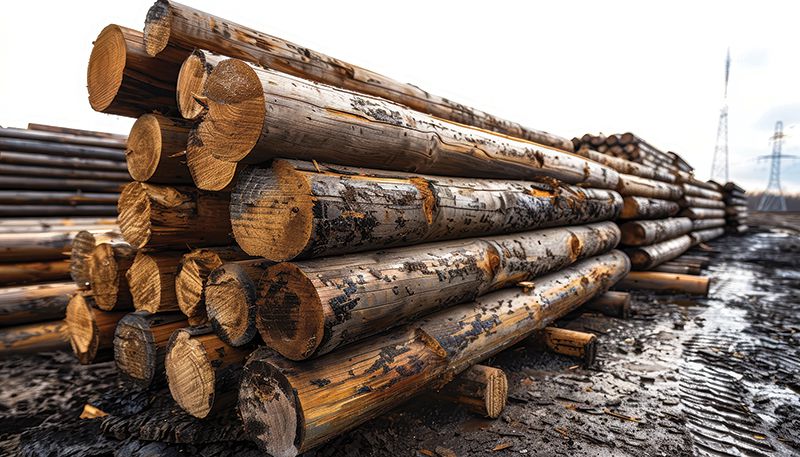 state, forestland spans 17.7 million acres, supporting a healthy logging industry that translates to a $17.2 billion annual economic impact from timber sales, 60,000-plus jobs and a national 14th-place ranking in forest products manufacturing.
state, forestland spans 17.7 million acres, supporting a healthy logging industry that translates to a $17.2 billion annual economic impact from timber sales, 60,000-plus jobs and a national 14th-place ranking in forest products manufacturing.
Today, roughly 3.8 million cords of wood fiber are harvested annually by Minnesota’s forest industries—a number comparable to the peak of the white pine logging era more than a century ago. New technologies, such as aerial remote sensing to measure forest inventory and fully mechanized harvesting systems, makes logging jobs faster, more efficient and sustainable.
Read more in the Winter 2023 issue (Vol. 2, No. 1).
M: Minnesota State Fair
Even before Minnesota was a state, it held its first Territorial Fair in 1854 that would later become the Great Minnesota Get-Together. The annual State Fair became a gathering place for farmers and  ranchers to showcase their crop and livestock production, as well as a place for potential state residents to learn about the agricultural opportunities available throughout the state.
ranchers to showcase their crop and livestock production, as well as a place for potential state residents to learn about the agricultural opportunities available throughout the state.
Today, the 12-day event showcases Minnesota’s agriculture, art and industry. The fair employs nearly 80 year-round full-time staff members and approximately 150 seasonal and 1,750 fair-time staff members. Just over 1.9 million people attended the fair in 2024, surpassing both 2023 and 2022, and setting attendance records on five days. In a 2018 economic report, year-round operations of the 2018 Minnesota State Fair generated $268 million in economic impact for the Twin Cities.
Read more in the Summer 2024 issue.
N: No-Till Farming
No-till farming practices are used on as much as 8% of Minnesota farmland, according to the USDA. With no-till farming, as the name suggests, the soil isn’t overturned before planting. Instead, seeds are planted on the undisturbed soil, which can improve soil health and control erosion. No-till also decreases the number of times farm equipment is used on a field, thereby reducing emissions.
No-till is just one of many ways farmers today are improving soil health. Other practices include minimum till, strip till, cover crops and regenerative farming.
O: Organic Agriculture
Did you know that Minnesota ranks 10th nationwide for organic farms? In fact, the state is home to as many as 700 organic farms and 230 certified-organic food processors and businesses, according to.jpg) the Minnesota Department of Agriculture. To be certified organic, farmers and organizations must meet national organic standards set by the USDA organic standards and maintain careful records.
the Minnesota Department of Agriculture. To be certified organic, farmers and organizations must meet national organic standards set by the USDA organic standards and maintain careful records.
The organic standards require that produce and grains be grown using natural fertilizers and eco-friendly pest control, and in ways that protect the soil and water. Animals that produce organic meat, eggs and dairy must be allowed to roam freely outdoors and not be given growth hormones.
P: Peas
Contributing to 35% of the nation’s total of green peas and ranking first in the U.S. for production, Minnesota perhaps is better known for being the birthplace of the Jolly Green Giant, who got his start in  promoting the green pea.
promoting the green pea.
In the town of Le Sueur, the Minnesota Valley Canning Company began canning peas in 1907. In 1935, the company introduced a larger pea variety to their line, marketing it as Green Giant Peas, and introducing a “giant” mascot to help sell the new product. Eventually, the company was renamed to Green Giant, with its iconic mascot representing the entire range of vegetables instead of just the pea.
Q: Quality Assurance
To produce great products for consumers and provide top care for the animals raised, Minnesota’s farmers and commodity groups focus on quality assurance education. Those efforts begin with the 4-H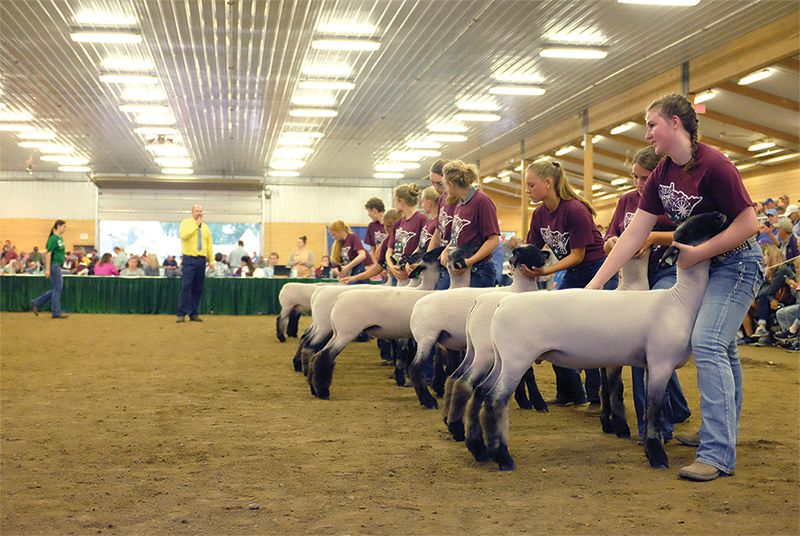 Livestock Quality Assurance program, which helps 4-H members provide excellent care for the food animals they raise, as well as ensuring a high level of food safety for consumers. Participation in the 4-H Livestock Quality Assurance program training is required for 4-H members who exhibit at the Minnesota State Fair.
Livestock Quality Assurance program, which helps 4-H members provide excellent care for the food animals they raise, as well as ensuring a high level of food safety for consumers. Participation in the 4-H Livestock Quality Assurance program training is required for 4-H members who exhibit at the Minnesota State Fair.
R: Red River Valley
With rich, fertile soil and temperate climate, the Red River Valley—spanning across northwestern Minnesota into North Dakota—accounts for nearly 45% of sugar beets grown in the U.S. Minnesota is the top producer of the crop, growing 30-35% of sugar beets. 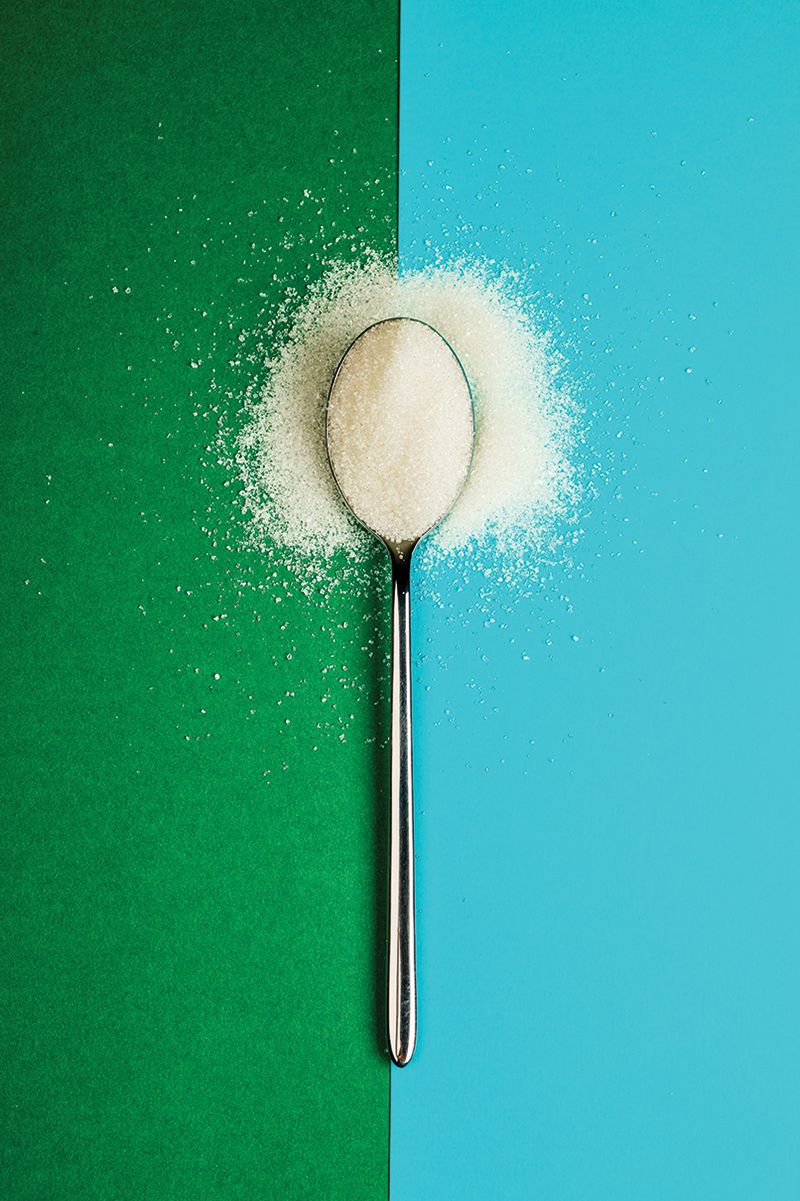
American Crystal Sugar Cooperative is one of three sugar cooperatives in the state, and their brand of sugar is a household name and pantry staple across the country. The cooperative produces both retail and industrial sugar, and uses the byproducts for other end uses. After sugar extraction, the fibrous byproduct is commonly used in livestock feed.
Read more in the Fall 2023 issue.
S: St. Anthony Falls
The only major natural waterfall on the Mississippi River, St. Anthony Falls’s 50-foot drop was harnessed as a source of hydropower for the commercial lumber and flour milling industries in the 1850s. 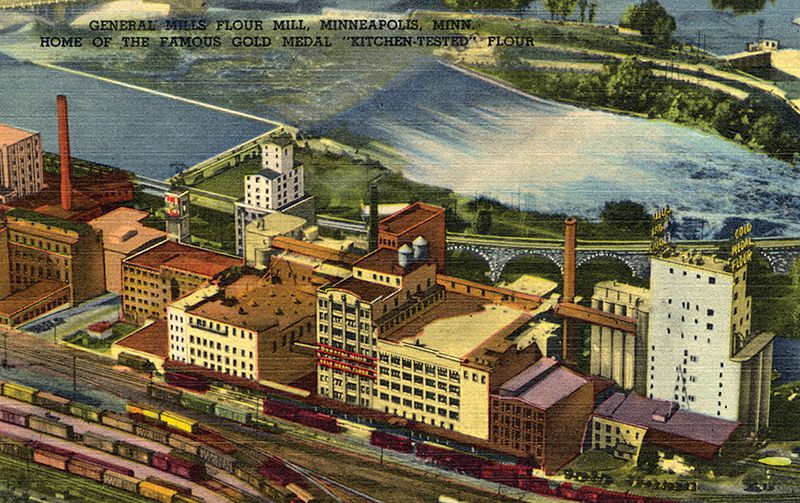 By 1880, flour mills overtook lumber sawmills and “Mill City” became a firmly established U.S. city known as the “Flour Milling Capital of the World,” with a population of 165,000 by 1890 (up from 13,000 in 1870). At the peak of the industry, more than 20 stone flour mills dotted the canal. One of the better-known mills, Washburn A Mill (the flagship mill of the Washburn-Crosby Co., which later became General Mills), was the largest and most technologically advanced in the world. It created a level of production unheard of at the time, grounding enough flour to make 12 million loaves of bread in a day.
By 1880, flour mills overtook lumber sawmills and “Mill City” became a firmly established U.S. city known as the “Flour Milling Capital of the World,” with a population of 165,000 by 1890 (up from 13,000 in 1870). At the peak of the industry, more than 20 stone flour mills dotted the canal. One of the better-known mills, Washburn A Mill (the flagship mill of the Washburn-Crosby Co., which later became General Mills), was the largest and most technologically advanced in the world. It created a level of production unheard of at the time, grounding enough flour to make 12 million loaves of bread in a day.
In the beginning, almost all the flour sold was used for home baking. Eventually, people moved from the farm into the city and home baking declined, giving way to the commercial baking industry. By the early 20th century, companies used marketing and advertising to differentiate their products from others, which were essentially all the same. In 1921, for example, General Mills introduced the Betty Crocker brand and fictional personality to appeal to housewives.
Today, the mills are closed, but the industries that grew up around them (marketing and advertising, banking, legal services, education) continue to be a significant part of Minneapolis’ identity. The Mill City Museum, built within the ruins of the Washburn A Mill, showcases original flour milling machines and vintage advertising, and offers tours in a repurposed grain elevator.
T: Tractors
Starting in 1929 with the merger of three companies, Minneapolis and Hopkins were home to Minneapolis-Moline tractor production. In its golden era, Minneapolis-Moline became a familiar name across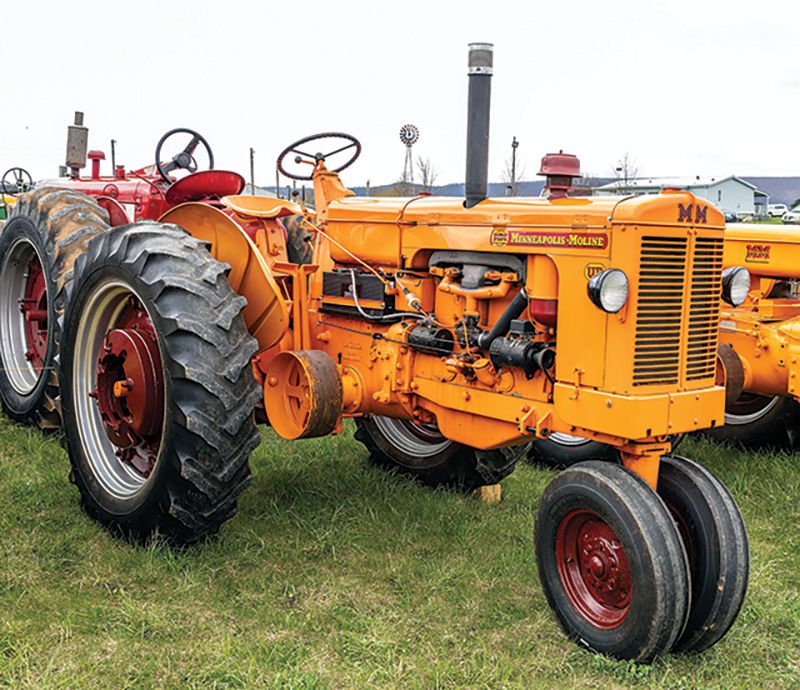 rural America, gaining a reputation for its machines that were designed with farmers' needs in mind. The company was sold to White Motor Company in 1969, but is still remembered for its iconic and innovative tractors today.
rural America, gaining a reputation for its machines that were designed with farmers' needs in mind. The company was sold to White Motor Company in 1969, but is still remembered for its iconic and innovative tractors today.
U: University of Minnesota
The University of Minnesota’s Minnesota Agricultural Experiment Station (MAES) supports the research of the university’s scientists to improve agriculture in our state. By funding locally driven, long-term research, the MAES supports approximately 400 research projects conducted by more than 300 faculty. All the research works toward the organization’s goal of “providing a better life for all Minnesotans.”
V: Vineyards 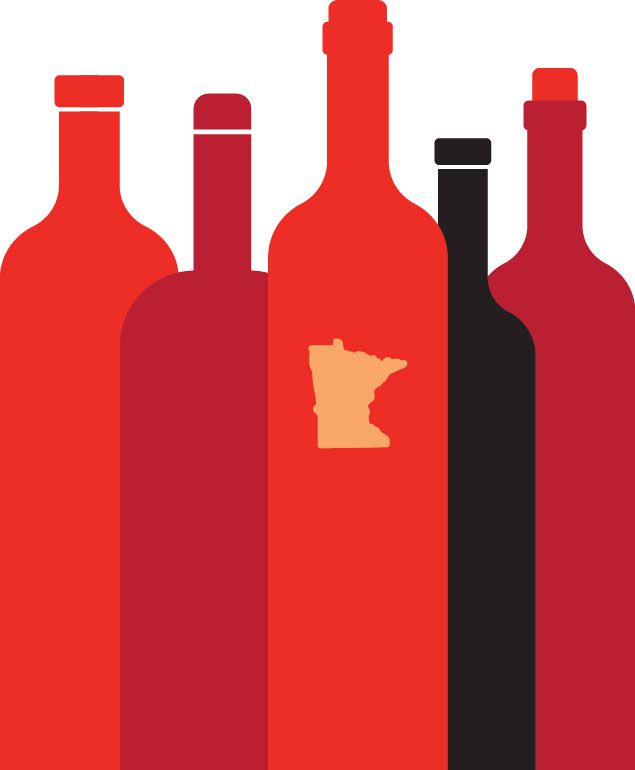
From Albert Lea to Wayzata and across the state, Minnesota is home to roughly 80 wineries and vineyards. Since the early 2000s, the University of Minnesota has been researching and developing cold-hardy, disease-resistant grapes that are cultivated on the estimated 2,400 acres of vineyards. Recent releases include seven cultivars that the U of M bred specifically for use in the wine industry. They include La Crescent, Frontenac Gris, Marquette, Frontenac Blanc and Itasca. The most recent, Clarion grapes, were developed in 2022.
W: Woolen Mills
One of the last vertical woolen mills in the country and Minnesota’s longest-standing manufacturing facility, Faribault Mill on the Cannon River has been crafting goods from sheep-shorn wool since 1865,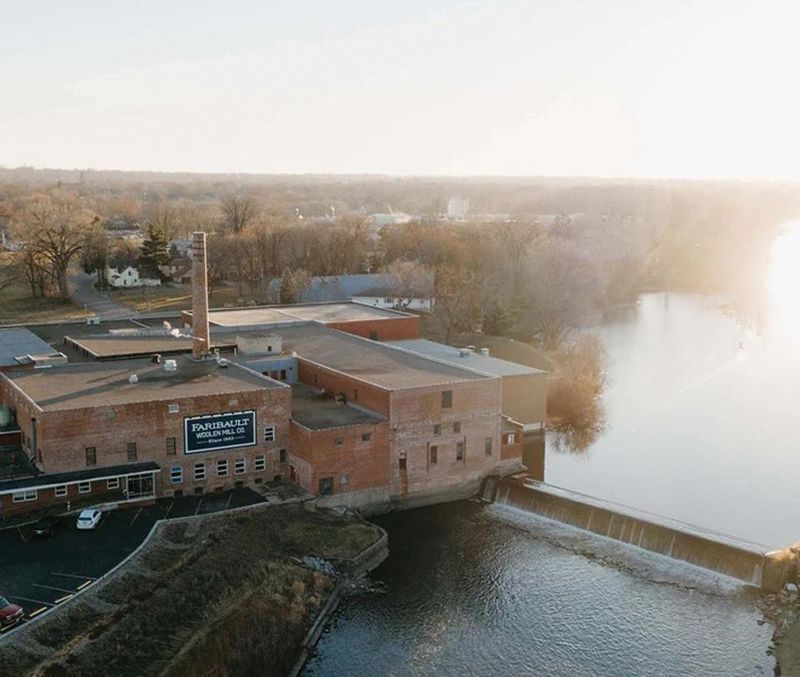 providing blankets for everyone from pioneers to military troops through two world wars (and still making blankets for the U.S. Army and Navy today). Through its 160 years of history, the fifth-generation mill has seen its ups and downs, with a shutdown in 2009 and reopening in 2011. Running century-old machinery alongside modern technology, much of the process is done by hand, from threading the loom one yarn strand at a time to burling with tweezers.
providing blankets for everyone from pioneers to military troops through two world wars (and still making blankets for the U.S. Army and Navy today). Through its 160 years of history, the fifth-generation mill has seen its ups and downs, with a shutdown in 2009 and reopening in 2011. Running century-old machinery alongside modern technology, much of the process is done by hand, from threading the loom one yarn strand at a time to burling with tweezers.
X: Xmas Trees
With ideal soil and climate to grow many kinds of Christmas trees, from Balsam Fir to White Pine, Minnesota ranks at No. 11 for Christmas tree production, making about $7 million on the commodity. There are more than 60 Christmas tree growers in Minnesota, and many farms ship to local markets or sell them right from their farm.
It may seem counterintuitive, but growing and cutting down Christmas trees annually is an eco-friendly choice for the environment. Artificial trees often leave a large carbon footprint, from the materials used to the long distances shipped. Christmas tree farms protect the land from development and often utilize steep hillsides that are not suitable for other agricultural farming. For every tree cut down, one to three seedlings are planted. Close to 8,000 pounds of carbon is removed from the atmosphere by an acre of Christmas trees before they are cut. Recycled trees can be used for lumber, turned into mulch, composted, fed to goats or donated to restoration projects.
used to the long distances shipped. Christmas tree farms protect the land from development and often utilize steep hillsides that are not suitable for other agricultural farming. For every tree cut down, one to three seedlings are planted. Close to 8,000 pounds of carbon is removed from the atmosphere by an acre of Christmas trees before they are cut. Recycled trees can be used for lumber, turned into mulch, composted, fed to goats or donated to restoration projects.
Every year at the Minnesota State Fair, decorated and undecorated trees and wreaths are judged in the Christmas tree competition, with winners displayed in the Agriculture Building. Undecorated, Minnesota-grown trees in several class listings are judged on leader, taper, color/foliage, trunk and overall appearance. Decorated trees and wreaths in various categories are judged on overall effect, craftsmanship, proportion, balance and originality.
Y: Yields
Farm commodity yields are often measured in bushels per acre. The USDA reports Minnesota farmers harvested over 1 billion bushels of field corn in 2024 and 329 million bushels of soybeans. These yields, along with lesser amounts of small grain like wheat, place Minnesota fifth in the U.S. in crop production, according to the Minnesota Department of Agriculture.
Since 2002, the number of acres farmed across the state has decreased by 7.5%, according to the Center for Rural Policy and Development’s 2024 Census of Agriculture. To increase yields from less land, farmers employ practices like precision agriculture.
Z: Zoos
The Minnesota Zoo’s 485 acres in Apple Valley is home to 4,400 animals, among them are several farm animals. The zoo’s Wells Fargo Family Farm, a working farm featuring chickens,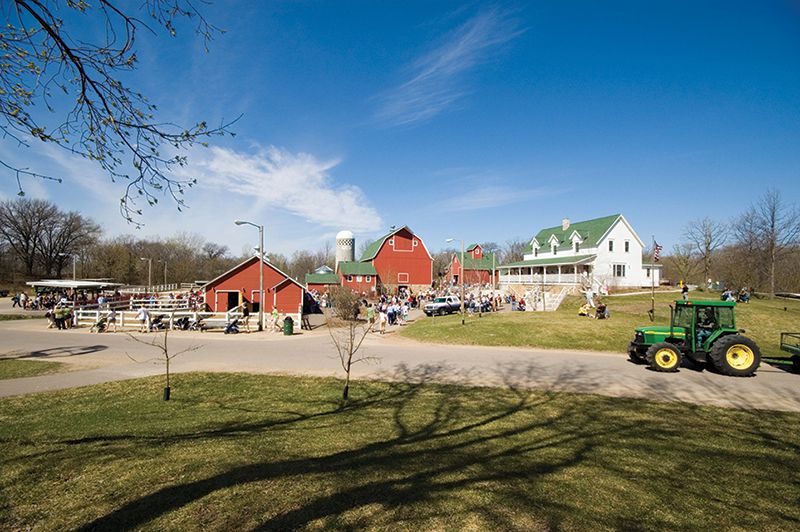 cows, goats, horses, pigs, rabbits and sheep, provides visitors with the opportunity to interact with farm animals and better understand the role of farming in our state.
cows, goats, horses, pigs, rabbits and sheep, provides visitors with the opportunity to interact with farm animals and better understand the role of farming in our state.